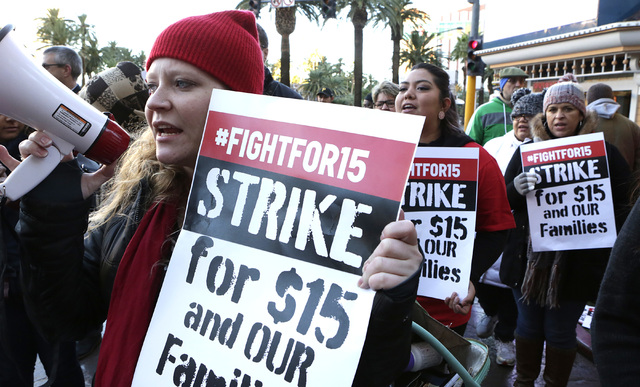Tim Burke: entitlement programs may pay more than going back to work
In my last column, I stated that government entitlement programs have essentially created a “no-win” situation for many Nevada residents that are receiving benefits.
That is because the benefits they receive are greater than what they would earn by being employed. A recent report published at cheatsheet.com shows that in Nevada as well as other states, public assistance programs, or welfare, could pay more than full-time, minimum-wage jobs.
The report states that the Cato Institute’s Work Versus Welfare Trade-Off study totaled the welfare benefits offered in each state and compared that value with the wages workers would need to earn in order to have an equivalent take-home income. Cato found for long-term dependents, welfare actually pays pretty well.
The study examined the package for a single mother with two children, who could use programs such as Temporary Assistance for Needy Families (TANF), Supplemental Nutrition Assistance Program (food stamps), Medicaid, housing assistance, utility assistance, and Women, Infants and Children (WIC).
The results? Recipients of this assistance earned more than the average pre-tax, first-year wage for a teacher in 11 states and more than the starting wage for a secretary in 39 states. This means welfare beneficiaries could make a better living off public assistance programs than they would working full-time jobs at minimum wage in many states — prompting the study to infer that many are likely to choose welfare over work should this trend continue.
When broken down into an hourly wage equivalent, the report found the welfare package exceeded minimum-wage jobs in 34 states, as of their 2017 minimum wages. On the other hand, in states, such as Maine, Texas, Florida, and Mississippi, working a minimum-wage job was more profitable than a welfare package. But they’re really just outliers.
According to the study, in Nevada the total welfare benefits package equaled $31,409 and an hourly wage equivalent of $14.34. The state’s minimum wage for employees who are offered qualified health benefits from their employers is $7.25 per hour and the minimum wage for employees who are not offered health benefits is $8.25 per hour.
So if you are on benefits and looking for work, you have to find employment that pays you the equivalent of approximately $15 per hour or you will actually lose money.
And none of this takes into account adding child care expenses when you go to work. There are programs to offset child care day care costs, but there are waiting lists.
In Northern Nevada, they are administered by “The Children’s’ Cabinet” and in Southern Nevada by the “Las Vegas Urban League.”
Both the Obama administration and now the Trump administration have stated that helping offset the costs of child care as an important goal of their administrations.
In 2015 in his State of the Union Address, President Barack Obama stated: “In today’s economy, when having both parents in the workforce is an economic necessity for many families, we need affordable, high-quality child care more than ever. It’s not a nice-to-have, it’s a must-have. So it’s time we stop treating childcare as a side issue, or as a women’s issue, and treat it like the national economic priority that it is for all of us.”
In April, President Donald Trump released a proposal to increase the tax benefits to offset child care costs. If passed, that proposal would eventually return money back to those workers paying for child care. But neither President Obama previously nor President Trump has addressed the primary issue of how to pay for the weekly costs of child care when returning to work.
An expansion of the Child Care Subsidy Program in Nevada will allow parents on entitlement programs to return to work without struggling to cover child care costs. Perhaps a voucher system similar to the school choice system can be implemented to help pay for those costs.
It is completely foolhardy and unrealistic to expect someone to return to work and have less income and benefits than if they stayed on entitlements. Of course, you could eliminate the programs entirely, leaving residents without food, clothing or shelter but that is not the right thing for our society to do.
We need to find another way.
Next week: how government-funded education programs can help put Nevada residents back to work.
Tim Burke is a businessman, philanthropist, educator and Pahrump resident. Contact him at timstakenv@gmail.com

















